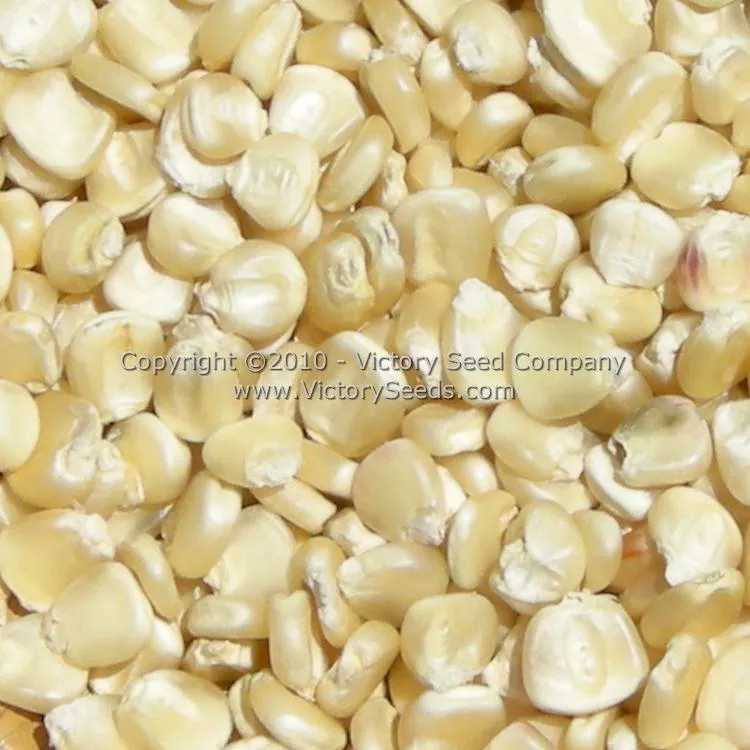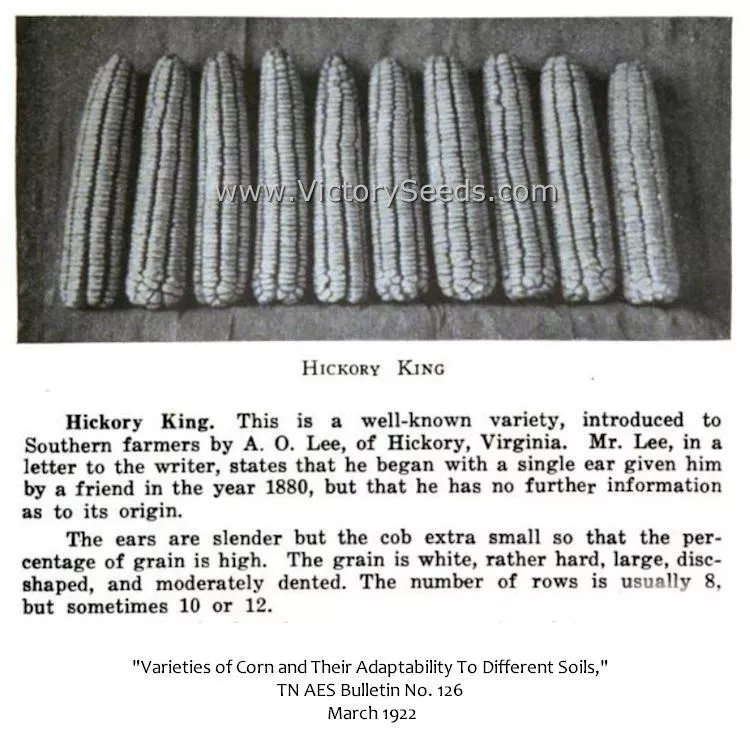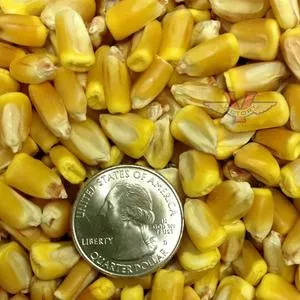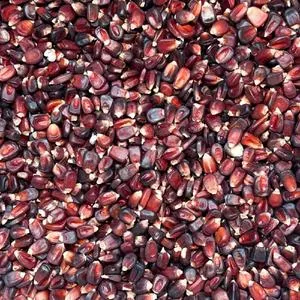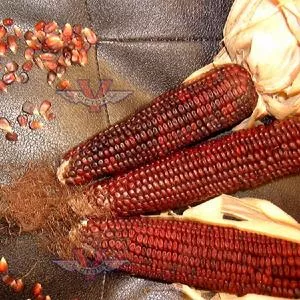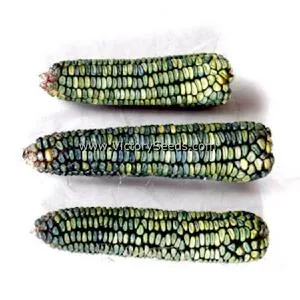

Hickory King White Dent Corn
Price: $3.34
SKU: 31400411'Hickory King' was introduced by A. O. Lee of Hickory, Virginia, who developed the variety out of a single ear of corn that he had received from a friend in 1880. W. Atlee Burpee described it in the 1888 Farm Annual as follows:
Sow seeds about 1½ to 2½ inch deep, 3 to 4 inches apart, in rows spaced 24 to 30 inches apart. Thin to 6 to 12 inches apart.
Harvest Information:
Pick the ears for dry grain or decoration when the husks are dry and the kernels are hard enough that you cannot make a dent in them with your fingernail. Many people pick the ears too early when kernels are still soft. If this is done they shrivel up and shrink and their beauty is destroyed. They cannot finish maturing once they have been picked.
Even though the ears look dry, there remains moisture deep within the cob. If you were to enclose them in a box, the moisture would cause them to sour and mold. You may let them dry longer on the plants if neither weather nor predators are damaging them. Otherwise hang them up or lay them out in the open until they are completely dry inside.
Customer Reviews:
By Todd L. Zimmerman (Ocala Florida) on November 17, 2024
I spent about $3.00 on a 1oz seed pack in July and got three eating cobs and 3oz of seed for next year's planting by November.
I'm a new to N-Central Florida and this was a bit of an experimental year in the new garden/sandbox. I ordered Hickory King seed from Victory in July and planted in August with a plan to grow and mature the crop before December frost. However, only nine (of 60) seeds germinated. The poor germination could have been the pack/lot or could have been due to me oversoaking the seed before planting. The same practice has not affected other seeds incl. corn, but this H.K. seed may not have liked it. I reported the germination and Victory was prompt and courteous--I did not ask for a refund or new seed because at that point it was too late in the season for re-planting and I figured I would have my own seed saved for Spring. But Florida had other plans... Next to my garden plot of Hickory King was a plot of Painted Mountain corn with 99% germination. It grew and tasseled but then Southern Blight hit it like a hammer and I had to pull and dispose of all the plants. The nine surviving Hickory King plants (growing a few feet away) got the blight soon after and I started trimming away infected areas of the leaves to do what I could to save them--short of spending money on fungicides--since I had already told Victory I didn't need replacement seed. The blight tried to do more damage but then Hurricane Helene hit. I had rigged supports for the plants, high bamboo cross bars for them to lean against, and five of the nine actually made it through standing (the eating cobs came from the downed plants). The weather dried up after that and slowed the blight a bit. Then Hurricane Milton then came through. Four plants were standing after that, if you can call stalks, cobs (2) and finely shredded leaves plants. The remains stood around for a few days before they started to turn brown--well before the listed days to maturation--so I collected the two cobs, shucked them (because blight on the husk) and brought them inside to dry. One was small, worm damaged and half moldy, while the other was small and had poor pollination success. When the healthy-looking seeds were hard and dry I did a germination test. They sprouted. So, considering how cheap I am, turning 1oz of seed into 3oz (much more than I need), getting some exercise, learning about horrible mid-summer/fall gardening in Florida and not wasting a good spring/summer season while doing it seems OK to me, but is Hickory King corn from Victory Seeds well suited to growing big productive crops in my 2024 fall growing conditions? No. Spring-Summer? Maybe. LOL
By Donnie (Yuma Colorado) on November 23, 2023
Hickory King after nixtamalization and then in Pozole. Very delicious!
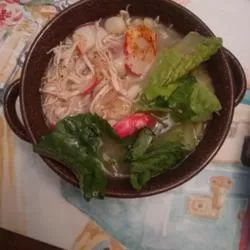

By Donnie (Yuma Colorado) on September 2, 2023
Best tasting corn on the cob I've ever eaten. I prefer it over all of the sweet corn varieties. I've boiled the ears then eaten it in two different ways. First being butter and salt and 2nd being Elote street corn. Can't wait to make pozole out of it later this year.

